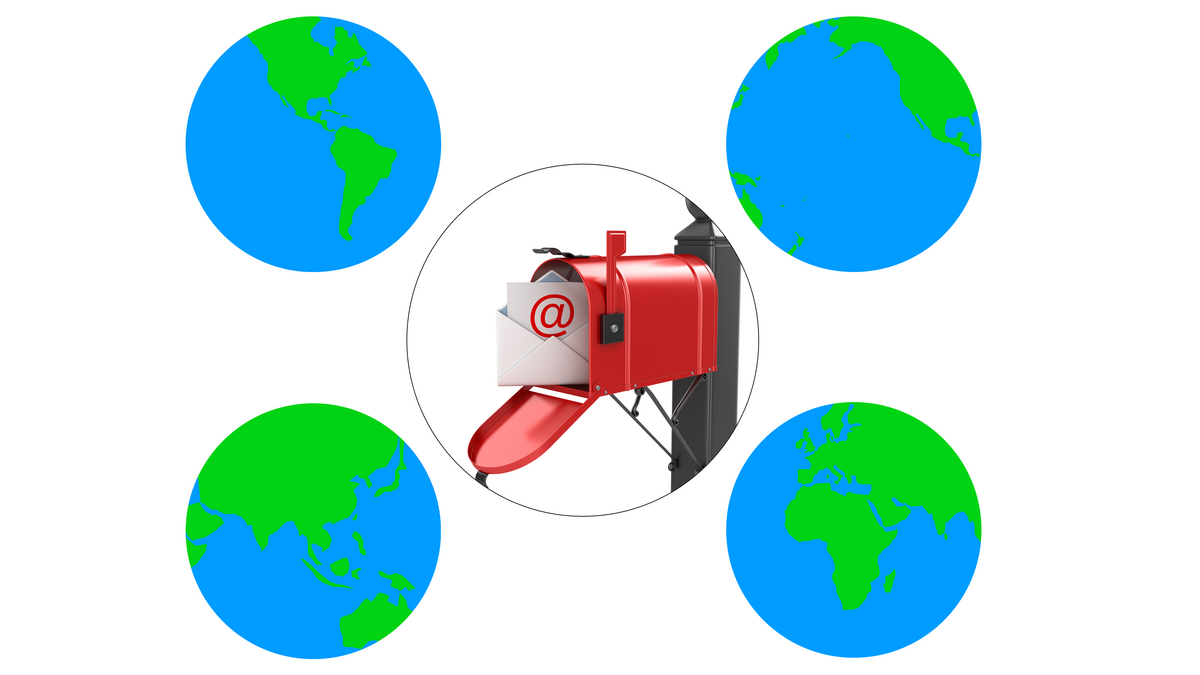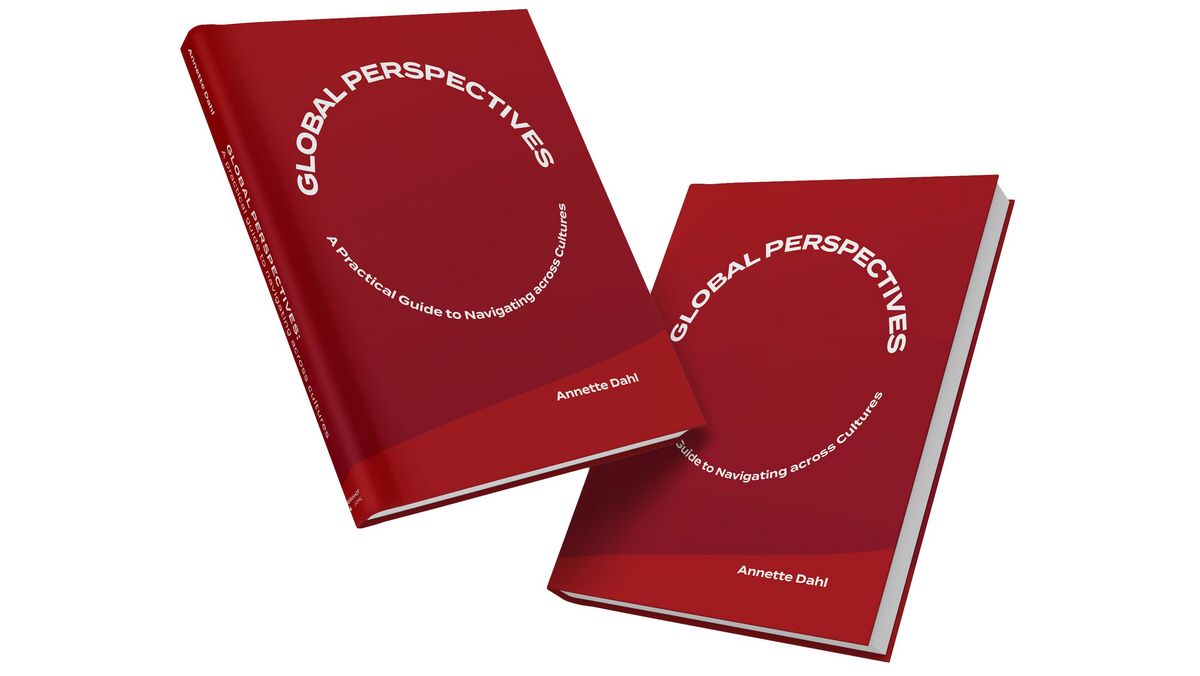10 Tips for Effective Global Email Communication
It’s no secret that email is a ‘distant’ communication channel. When we cannot see or hear each other, we miss all the important signals that we can otherwise decode from body language, facial expressions and tone of voice.
Therefore, the risk of misunderstandings is high when communicating by email. And that risk is multiplied when you communicate in cross-cultural contexts.
If you and your colleagues work together remotely in a global team, we recommend that you make a set of common ground rules for your email communication. You could consider questions such as: Does every email need a response? How quickly should emails be answered? Who should be on the cc list – and when? Etc.
“BUT what if I'm not part of one global team – but I send emails as part of my work to a lot of people from many different countries?”
We get asked that a lot at C3 Consulting.
We’ve put together this blog post with 10 tips for those who are in that exact situation.
1. Ask yourself: Is email the right tool?
Before sending an email, first ask yourself: Is email really the right tool to use here? Would a video conference, phone call or quick chat message be better? Or do you need to meet face-to-face if that is possible?
When working across cultures and national borders, be extra aware of which communication channels are suitable for different types of tasks and messages.
There can be good reasons to choose email as a tool.
Perhaps you already have a good relationship with a global partner where you feel that email is the most effective way for you to clarify small things in your collaboration. Or you communicate with authorities in a country where it is necessary to be able to document things in writing.
But there are also situations where email will typically not be the best choice – or where you should at least give it a bit more thought before you get started.
Here are some examples of these situations:
- When the situation is very complicated
- When you need an answer urgently (be aware that your global partner may have different assumptions about how quickly you should respond to an email – and remember to take time zone differences into account too)
- When misunderstandings or conflicts are already present in your collaboration
- When you need to convey bad news that will have major consequences for the recipients (e.g., employees)
- When dealing with confidential or sensitive topics (keep in mind how easy it is to forward an email to a large group of people)
- When it’s your very first contact with a partner in a country where building personal relationships at work is very important
2. Try to see your email from your recipient’s perspective – and compare it to your own
When you need to start writing an email during a busy day, your first impulse might be to do what you normally do.
But stop for a second and consider: What cultural assumptions and values are connected to the way you usually do things?
Let’s say, for example, that you are Danish, and you usually collaborate with Danish colleagues.
Then you probably tend to communicate quite directly and informally when emailing each other – and this probably also applies to the communication that takes place between managers and employees. Equality is an important value in Danish work culture, and most Danish organizations have a very flat structure.
Now, spend a few more seconds looking at the situation from your recipient’s perspective. Do you know something about your recipient’s cultural background? What does “normal” look like at their workplace? And what cultural assumptions and values are behind it?
Then consider:
- What similarities and differences can you spot between your own culture and that of your recipient?
- And what are the implications of how you write your email?
If you deal with several colleagues from a particular culture, finding a ‘cultural informant’ is worth its weight in gold – someone who knows that culture from the inside, and who you can ask about how things are usually done there.
But what if cultural informants are completely unrealistic because you collaborate with people from SO many different countries – and you really need to get those emails sent off, even though you still know nothing about the cultural backgrounds of your recipients?
Well, at least you’ve sharpened your cultural self-understanding and reminded yourself that you should approach your global collaboration with a curious and exploratory mindset.
3. Pay attention to hierarchy – also in relation to cc
Who are you allowed to email? And who should you put on the cc list?
It largely depends on how hierarchical a work culture you’re dealing with.
In the least hierarchical cultures, such as the Danish one, you as an employee can typically email a superior – even if they are not your direct manager. And as a manager, you can email an employee from another team who is managed by someone else.
In more hierarchical cultures, that kind of thing can be a no-go.
Similarly with cc.
In some places it is a MUST that when you email an employee – you put their boss on copy. Elsewhere, employees may see it as a lack of trust if you continue to copy their boss on email.
If you know nothing about your colleague's cultural background, then ‘the hierarchical approach’ is the safest:
- If you’re an employee, start by emailing your own immediate boss or colleagues at the same level as yourself.
- If you’re a manager, start by emailing other managers who are at the same level as you.
After the first few emails, you can ask if it would be okay for you to email directly with X and Y.
And you can ask who it would be appropriate for you to put on copy – and what you’re expected to do if you yourself are cc’d on an email.
4. Start and finish your first email politely
How do you start your email?
Dear, Hi, Hello – or no salutation?
First name or surname?
Title or no title?
There can be a lot of opinions on these issues, even within the same national culture!
If you’re the one receiving the first email from a new business partner, notice how they start it off. Also look at their email signature. If there’s a title in front of the name, use the same title in your reply email.
If you’re sending the first email, then it’s better to be more polite than usual.
And if you’re emailing someone who is in a higher position than you, take it up another notch!
If it turns out that your business partner is used to a more informal tone, then it’s not a disaster. They might think that your style is a little formal, but you’d typically avoid offending someone by starting off politely.
Start by using your business partner's full name. And then it would be perfectly fine to ask later on, e.g., in a conversation over the phone: What can I really call you? If you’re in doubt about which name is their first name and surname, ask about that too.
Hold off on the titles for now. Because although titles are important in some cultural contexts (Mr., Ms., Doctor, etc.), it might be hard for you to guess correctly in the first email. And getting the title wrong can be worse than using no title at all.
Finish your first email in the same way you started – in a more polite tone.
5. Remember to build relationships
In many parts of the world, strong personal relationships are crucial to establishing trust. This is also the case in a professional context.
Let's say that you have a background in work cultures like the Danish or Dutch where, despite not having a personal relationship with people, you still enjoy good and trustworthy collaboration with them.
But now you're starting to collaborate with people all over the globe – southern Europe, Latin America, Asia, the Middle East, Africa. In that situation, you can bet that the majority of your global partners have a background in work cultures where there is greater emphasis on personal relationships than you’re used to.
So even if you’re not really sure about how important personal relationships are in a particular country, our advice is that you should always start with a few ‘non-task-related’ phrases when emailing your global partners.
You can, for example, ask how things are going, ask about the weather or if your colleague has had a good holiday.
If you already know that personal relationships are important in your colleague’s culture, add a few more relationship-building phrases to the end of your email.
6. The message: Make it short, precise and explicit
Now you’ve got to the body of your email.
Start by making it clear what the purpose of the email is: What do you want your recipient to do?
Then write your message as briefly, accurately and explicitly as possible.
Consider using bullet points.
Avoid using imprecise wording such as: “Don’t spend a long time on it” or “It can’t be too expensive”. Because perhaps you and your global partner have a different interpretation of “long time” and “too expensive”!
Do you have a background in a culture where it’s normal to express yourself in an indirect way, so that the message is hidden ‘between the lines’? Be careful when emailing people with other cultural backgrounds. Because there’s a risk that your global partner will not be able to read between the lines and will therefore miss your message. Try to be explicit, even if it doesn’t come naturally to you.
If you have several business partners from a particular culture, you can eventually develop your writing style so that your message is even sharper in that specific cultural context.
For example, in American work culture, getting straight to the point is typically considered to be positive, while in a Chinese context, it’s good to start off with the larger context before getting to the key issue.
7. The language: Keep it simple – and beware of slang and humor
Keep the language in your emails simple.
Use short sentences and avoid slang and proverbs.
Is English your mother tongue while your global colleagues use English as their second or third language? If so, make an effort to simplify your wording and take greater care when choosing your words.
Sometimes you can use pictures and other visual elements to explain your message.
Finally: Be careful about using humour in your emails.
If you’re Danish, take extra care when using Danish irony and "self-irony", as there is a high risk that your global colleagues will misunderstand it.
Are you in doubt about whether your recipient can decode your witty remark? If so, delete it before you hit ‘send’!
8. Emojis and exclamation marks: Be cautious about using them at first
Here’s a little story from a global group we worked with recently:
One of the British employees asked about his Danish colleagues' emails: “Why do they always use smileys when they email me? It doesn’t appear to be very professional.”
While one of the Danes made the following comment: “Oh my god, it's as if my American colleagues are shouting at me all the time. They use SO many exclamation marks!”
When the group met and started to explore what was behind their different approaches to writing emails, they had a good laugh – because they’d completely misunderstood each other's good intentions.
The point is:
There can be many different ways of interpreting emojis and exclamation marks. And there may be different views on whether they belong in a professional email at all.
So, be cautious about using both – especially in your first communication with new global colleagues and partners.
9. Follow-up: Plan for what will happen after you’ve sent the email
Now spend a few more seconds before hitting ‘send’ to consider: What’s the next step after I've sent my email?
If you expect a response before a certain deadline, make sure you’ve made that clear.
It can often be useful for you to follow up on your email via another communication channel, such as a chat over the phone or a video call. This is especially true if there are language barriers, if you don’t yet know your business partner very well, or if there are complex tasks.
If you intend on following up, write when and how you want to do it in your email.
And remember to make a note of the follow-up in your calendar so you actually get it done!
10. When you’re the recipient: Try to see the email from the sender’s perspective
Now you’ve sent your email.
But you probably also receive emails from global colleagues and partners.
And sometimes you might think along the lines of: “What a weird way to write an email. It makes no sense!”
If this happens, keep in mind that you’ll get the most out of your global collaboration if you approach it with a curious and exploratory mindset.
So instead, try to see the email from the sender’s perspective and look at it in the following way:
“I can see this is a completely different way of writing emails than I'm used to. Interesting! I wonder if this is how it’s typically done in the work culture that my colleague has a background in. And what cultural assumptions and values are connected to this way of doing it? I must explore that!”
With this approach, you can build your knowledge about the cultural backgrounds of your global colleagues and partners – and continually adjust your own email style to achieve the results you want.
Go ahead: Download and print our one-pager of the 10 tips
You might be thinking: “Wow, it seems a bit much to have to think about all these things just to send an email!”
But we guarantee it is far less cumbersome compared to a situation where, already from the first email to a global colleague, there are a lot of misunderstandings that can take months to smooth over.
We’ve made a one-pager of the 10 tips for you to print out and pin to your bulletin board. So, when sending emails across cultures, you can take a quick look at them until they become second nature!
Download our one-pager of the 10 tips here.
Where to go from here
Can we help you and your company boost your communication across borders and cultures? Read more about our cultural awareness and global mindset training and country-specific cultural training – or contact us for a chat.
In C3 Consulting’s book 'Global Perspectives', there’s an entire chapter dedicated to long-distance collaboration with global colleagues and partners, written by our virtual collaboration expert, Line Mørkbak. Read more about the book and how to get hold of it here.
Want more inspiration for your cross-cultural work? Follow us on LinkedIn – and sign up for our newsletter using the form below.


